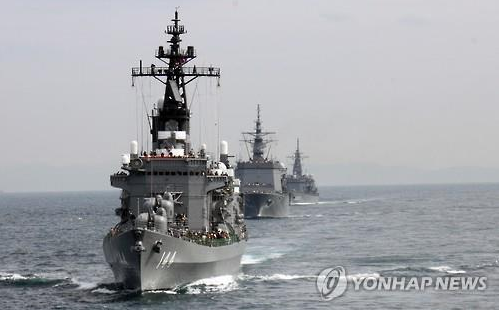The Dark Shadow Upon The South China Seas
(Source: Yonhap News)
There is a rumbling in the South China Sea. On April 3, a submarine from the Japan maritime self-defense forces together with two convoy ships pulled into the Philippines. Then, on the 12th, they stopped by Vietnam’s Cam Ranh Bay. During that time, from April 4 to the 15, on waters facing the South China Sea, the United States and the Philippines conducted the annual Balikatan (shoulder-to-shoulder) Joint Military War Exercises. On April 28, China carried out amphibious exercises with war ships, air-cushion vehicles, and fighter helicopters. The maritime territorial conflicts around the South China Sea Paracel Island (Chinese name: Xisha, Vietnamese name: Hoang Sa) and the Spratly Islands (Chinese name: Nansha) that first emerged in 1960, are once again escalating tensions in East Asia as the US and Japan strengthen military cooperation with Vietnam and the Philippines sparking strong reactions from China.
Last March, the United States and the Philippines started joint patrol of the South China Sea and will continue to do so. Afterwards in April, Secretary of Defense Ash Carter visited the Philippines and promised to strengthen military cooperation around maritime conflicts in the South China Sea. In addition, the United States is planning to rotate its military presence in the Philippines, and the Philippines is allowing the United States to station its military in five of its bases including the Antonio Bautista Air Base and the Basa Air Base. These US actions are part of its pivot to Asia which it announced in 2011: the US State Department would shift away from the Middle East and towards Asia to check China. This was part of their efforts to increase their military presence in Asia by seeking out bases.
Last February, Japan signed a defense agreement and promised to provide the Philippines with military equipment. More specifically, this May, Minister of Defense Nakatani and the Philippine Secretary of Defense Gazmin are expected to finalize a deal leasing out 5 used TC-90 training aircrafts to the Philippines at a nominal fee. In addition, Japan is pursuing military cooperation with Vietnam. Recently, on April 12, convoys from Japan maritime self-defense force stopped at Cam Ranh Bay in Vietnam neighboring the South China Sea. Japan announced it was a practice voyage for leadership cadets in its maritime self-defense force. However, the actions are being analyzed as Japan checking China’s advances in the South China Sea. In Japan, after coming into power, the Liberal Democratic Party called for a “strong Japan” and expanded its military spending to pursue its right to collective self-defense. To re-emerge as a powerful state in Asia, Japan is strengthening its alliance with a US that wants to limit China’s rise.
Last November the Philippines and Vietnam formed a strategic partnership; this year they are discussing joint patrol of the South China Sea. Both welcome active US intervention in South China Sea maritime territory conflicts. They seek to balance China through military cooperation with the US and Japan. In April, while inspecting the South China Sea and conducting joint military training in its waters, Vice-chairman of China’s Central Military Commission Fan Changlong criticized US and Japanese intervention in territorial conflicts in the South China Sea.
Recently, the military tensions in this region are escalating around the South China Sea territorial conflicts, as the US and Japan strengthen military cooperation with the Philippines and Vietnam sparking strong protests from China. The US and Japan state that by strengthening the relationship with the Philippines and Vietnam they will make “efforts towards peace and security in the South China Sea region.” In reality, they are intervening because of economic and political interests. In the process they are increasing military tensions in the region.
The South China Sea territorial disputes should be resolved through peaceful dialogue between the affected parties. The current military cooperation around the South China Sea is moving away from a peaceful solution. The time has come for third parties to stop interfering, and for the affected parties to peacefully resolve the issue among themselves.

